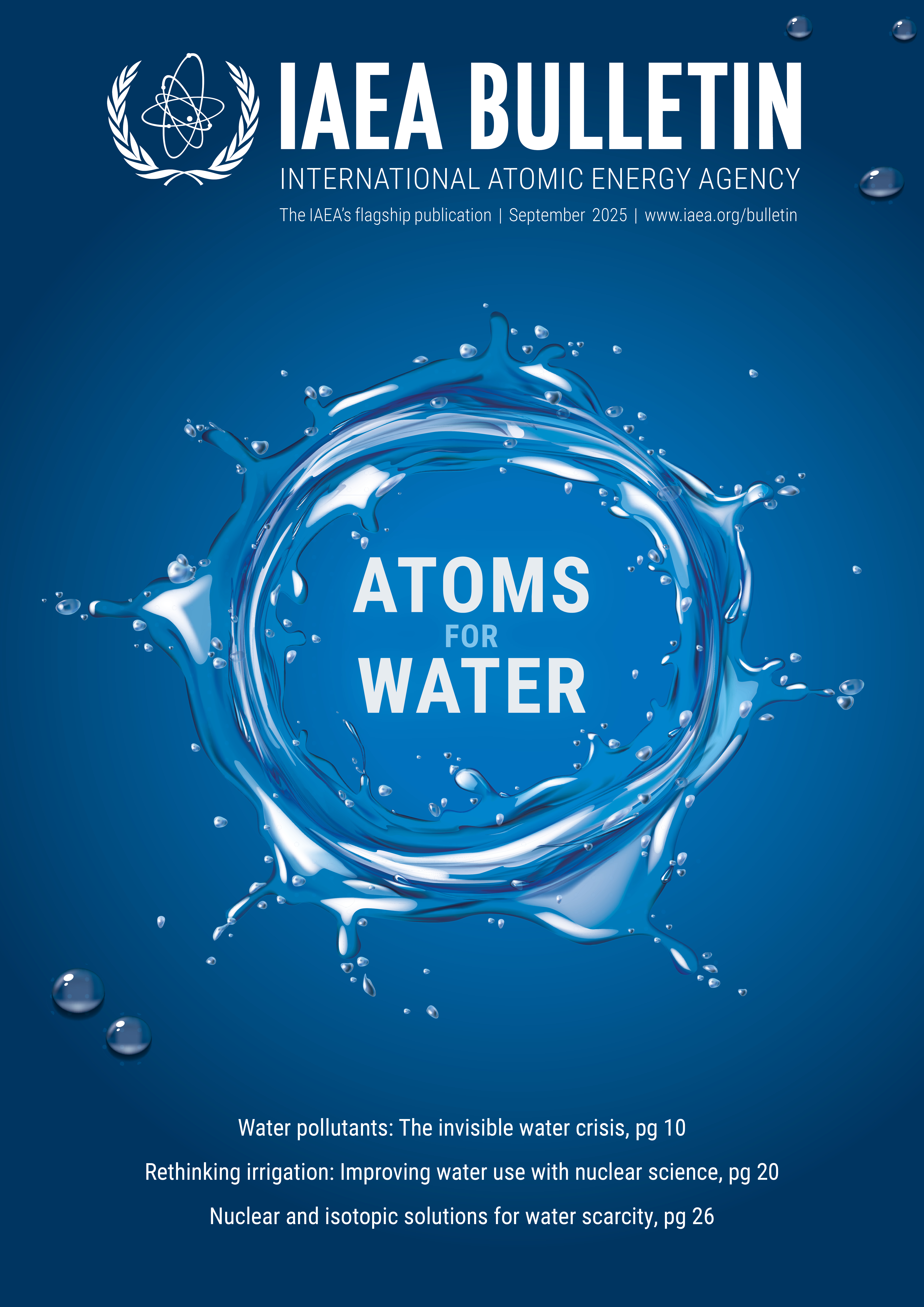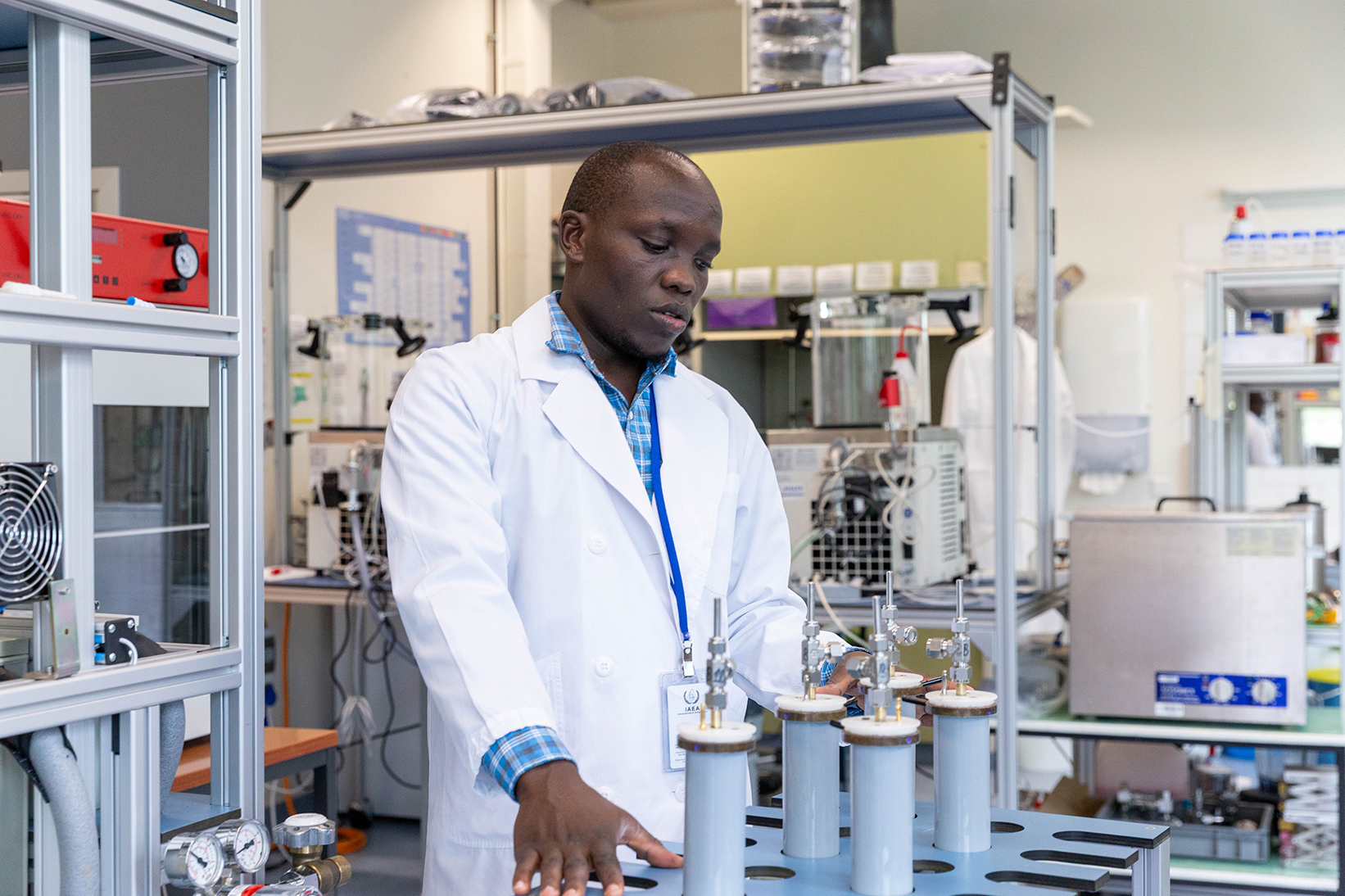How tritium analysis works
Stephen puts each sample in a water purification system. He connects tubes that will guide the water through tiny columns filled with ion exchange resins — special materials that act like magnets on salts and other charged particles, removing them from the water. The process takes about an hour, and Stephen uses the time to update the laboratory’s sample database.
Once the water purification is done, the samples are ready for the next step: enrichment. Stephen inserts them into the electrolytic enrichment system, a two-metre-long, steel framed machine lined with cables, digital displays and rows of tubes. Electricity begins to flow through the system.
Unlike sulphur-35, which floats freely in water, tritium is part of the water molecule itself, so it cannot simply be filtered out for measurement. Electrolysis gradually splits water molecules into hydrogen and oxygen gases, reducing the water’s volume and consequently concentrating the tritium.
Stephen regularly checks and maintains the machines and oversees the enrichment process, which can take up to two weeks to complete. He ensures that the electricity running through the samples is gradually increased as required.
“We are always striving to improve the enrichment process,” he says. “The concentration of tritium is very low and hard to measure. Effective enrichment is essential in getting reliable information out of the samples.”
Although tritium is highly concentrated after the enrichment process, it is still barely detectable in water samples. Even the faintest contamination from atmospheric radiation could distort the measurements of the samples. That is why Stephen takes the enriched samples to a room located several stories underground and lined with thick concrete, shielding it from environmental radiation. Here, he carefully mixes each sample with a chemical solution and puts them into machines that will measure their radioactive signature over the next 24 hours.
Back upstairs, the day is drawing to a close. Astrid has returned from the field and she and Stephen catch up on each other’s day. They are happy with the progress they have made and discuss their tasks for the following day.
“Our work here connects us with many regions of the world,” Stephen says, as he hangs up his lab coat and prepares to head home. “What we do supports so many areas — agriculture, climate change, public health and more. I am proud to be part of it.”

